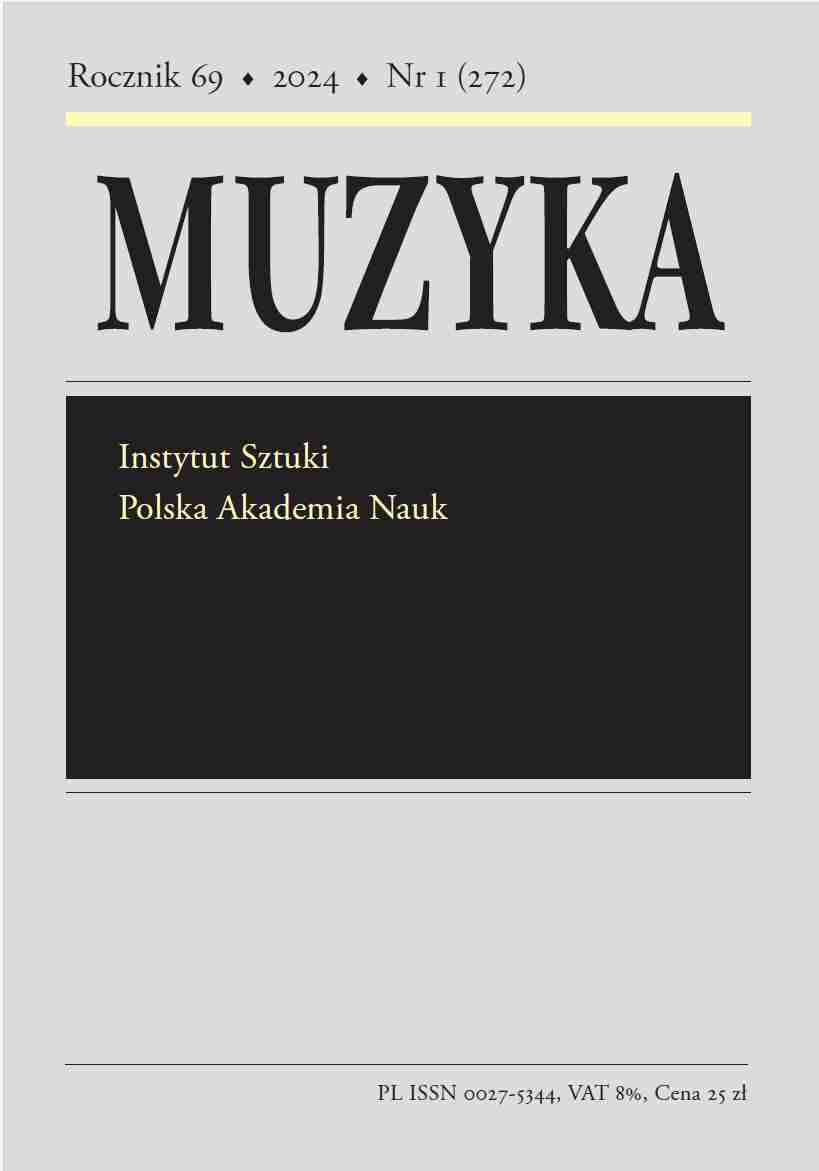The musical ‘ars interpretandi’ within the context of Maria Piotrowska’s general hermeneutics
Marek Dudek
(Poland)
Abstract
In pursuing her research, Maria Piotrowska sought to elaborate a model for interpreting the musical work from the perspective of a general hermeneutics, understood as the strict correlation between theory and practice. For Piotrowska, those two categories were one and the same, yet in her considerations she placed greater emphasis on hermeneutical praxis, which, evolving in a spontaneous way, drew mainly on the researcher’s curiosity. Yet does that suffice? Should the ongoing process of comprehension be based solely on something that is methodologically undefined? For Piotrowska, that was possible especially when the human mind, in a natural way, aspired to a profound and cogent interpretation, which could dispense with methodological awareness. In the longer term, however, such a procedure might show a tendency to create an illusory reality. That could be averted by creating a ‘central sensible whole’, which could be grasped partly thanks to a hermeneutic canon, to which Piotrowska ascribed integrity, sense and meaning, phronesis and sophia, prejudice, the circle, understanding, inner form, language and horizon. Its foundations were based mainly on the thinking of Dilthey and Gadamer, who referred to the textual space present in works of art. By realising successive points of the adopted canon, one can successfully define the object of study and discern within its various interpretative contexts, which, balancing between the object of study and successive points on the circle of hermeneutic cognition, reveal ever newer possibilities for verifying the existing reality. Consequently, interpretation has a chance of heading towards the fulfilment of a key hermeneutic category, namely, understanding. It was understanding that ensured the continuity of this process through the ages, of which Piotrowska, developing her individual method of hermeneutic procedure, was an ardent advocate. She considered that her method allowed for different manifestations of interpretation, without indicating their better or worse aspects, merely underscoring their originality. It was important to avoid copying one’s predecessors and strive instead to find one’s own path to the truth, in which the scholar’s individual sensibilities would constitute the basis of its distinctness. Of course, it is difficult at first to state in which direction those interpretative tendencies will head. They might never attain the desired conclusion in the form of comprehension. However, such a liberalism, which Piotrowska saw as devoid of a priori schemata, displays the hallmarks of the art (ars interpretandi) within which every scholar wishing to experience hermeneutic fulfilment ought to move and from the perspective of which he or she will be perceived. This is a continuous action, which at every stage in its formation requires different stimuli from both the scholarly and cognitive domains. The ability to maintain a stable balance between those two aspects bears the hallmarks of a new hermeneutic method, combining categories of both scientific investigation and artistry as broadly conceived. Yet could they together lead to an interpretation that is not necessarily hermeneutics at all, let alone musical hermeneutics?
Authors
Marek DudekPoland
Statistics
Abstract views: 284PDF downloads: 165
License
Copyright (c) 2024 Marek Dudek

This work is licensed under a Creative Commons Attribution 4.0 International License.
The author grants the publisher a royalty-free nonexclusive licence (CC BY 4.0) to use the article in Muzyka, retains full copyright, and agrees to identify the work as first having been published in "Muzyka" should it be published or used again (download licence agreement). By submitting an article the author agrees to make it available under CC BY 4.0 license.
Articles from 2018/1 to 2022/3 were published under a Creative Commons license CC BY-NC-ND 4.0. During this period the authors granted the publisher a royalty-free nonexclusive license (CC BY-ND 4.0) to use their article in "Muzyka", retained full copyright, and agreed to identify the work as first having been published in our journal should it be published or used again.










